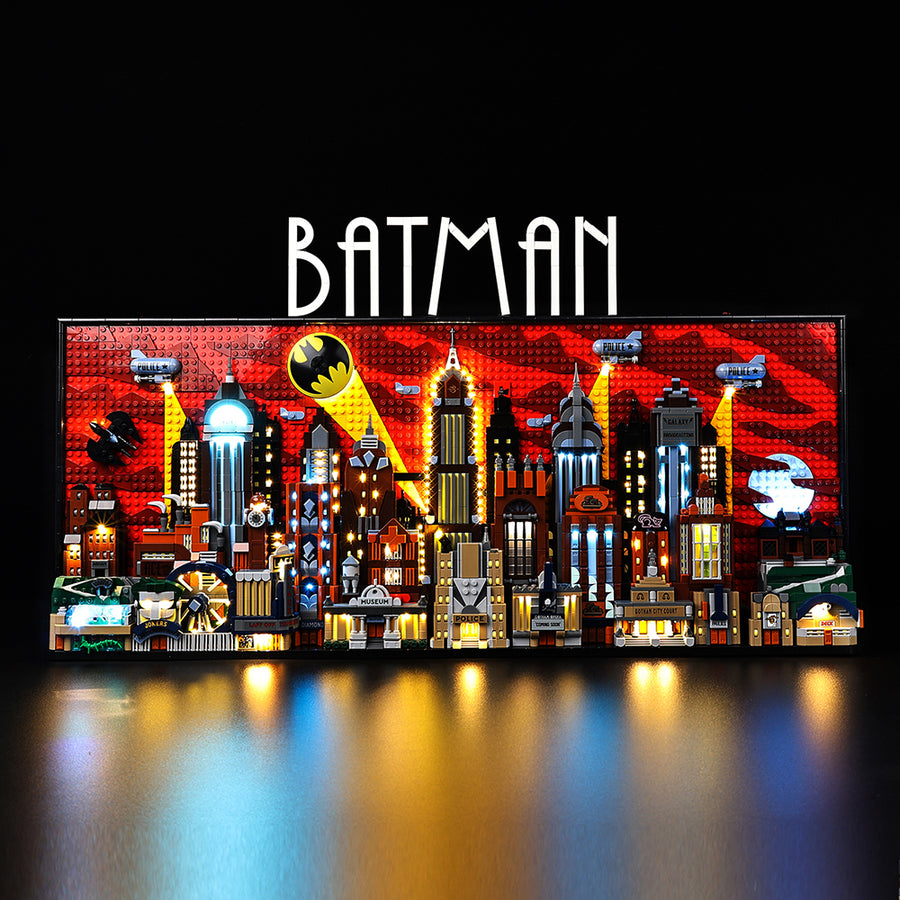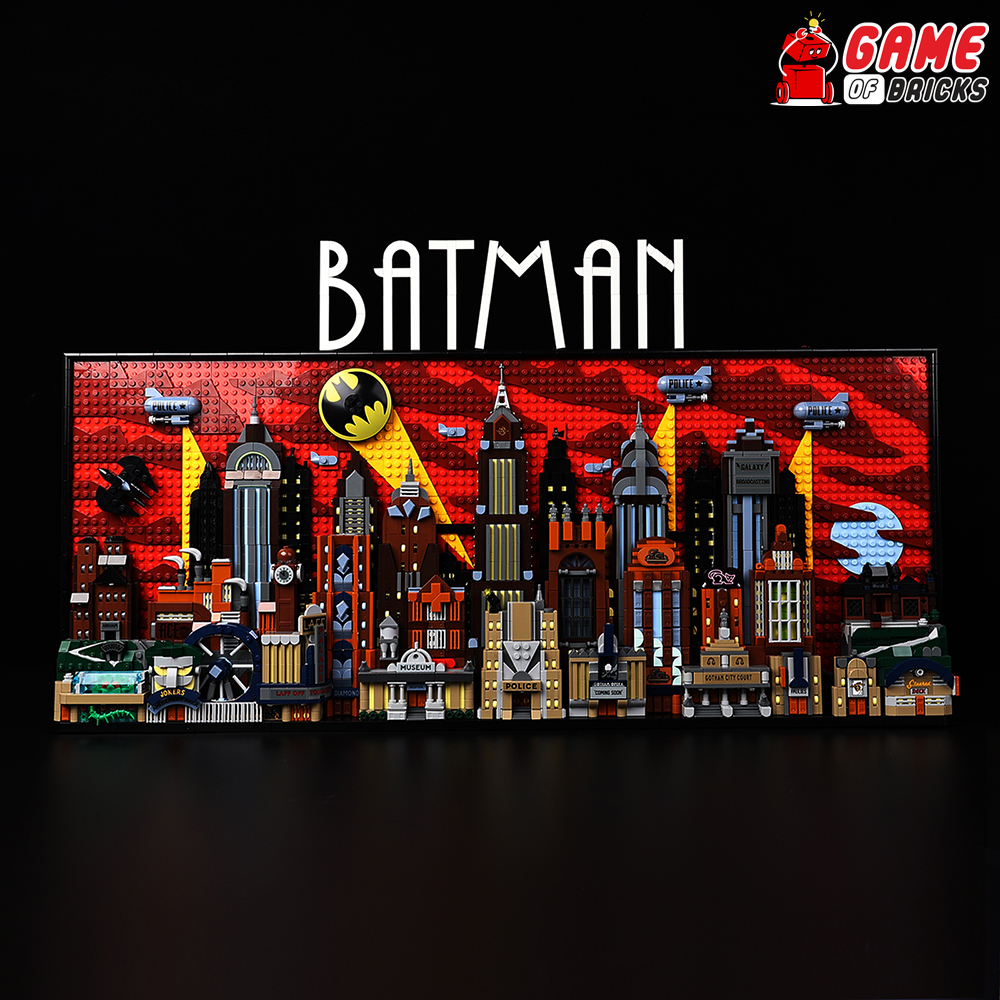Difference Between Static and Pulsing Lights for LEGO
Introduction
The art of LEGO building transcends mere assembly of bricks; it's a venture into a world where tiny pieces come together to tell a story, evoke emotions, and capture imagination. Integral to this storytelling is lighting – a subtle yet powerful element that can transform a static LEGO model into a dynamic spectacle. In the realm of LEGO lighting, there are two primary players: static and pulsing lights, each bringing a unique dimension to LEGO creations.
Static lights, consistent and unwavering, provide a steady glow that can highlight the architectural beauty and intricate details of LEGO models. On the other hand, pulsing lights – characterized by their rhythmic fluctuation in intensity – offer a lively and vibrant touch, bringing motion and energy to LEGO scenes. At the heart of these pulsing effects lie "pulse boards," sophisticated components that control the timing and pattern of light pulsation, thereby creating mesmerizing visual effects.
In this article, we delve into the nuances of static and pulsing lights in LEGO projects. We explore how pulse boards play a pivotal role in crafting dynamic lighting experiences, and how each type of lighting can be used to elevate LEGO sets from mere constructions to captivating works of art. Whether you are a seasoned LEGO enthusiast or a budding builder, understanding the impact of these lighting options opens up new possibilities for creativity and innovation in your LEGO endeavors.
Section 1: Understanding Static Lights
Subsection 1.1: What are Static Lights?
In the world of LEGO lighting, static lights refer to light sources that emit a continuous, unchanging illumination. Unlike their pulsing counterparts, static lights maintain a consistent level of brightness and color, creating a steady glow that can dramatically enhance the appearance of a LEGO build. These lights typically come in the form of LEDs (Light Emitting Diodes) and are known for their energy efficiency, longevity, and the clarity of the light they emit.
Characteristics of Static Lights in LEGO Builds:
- Consistent Illumination: Static lights provide a uniform light that doesn’t fluctuate in intensity, offering a reliable and predictable lighting effect.
- Variety of Colors: Available in various colors, static lights allow builders to add a personalized touch or thematic accuracy to their models.
-
Easy Integration: Due to their simplicity, static lights can be easily integrated into LEGO builds without complex wiring or programming.

Subsection 1.2: Uses and Benefits of Static Lights
Static lights are incredibly versatile and can be used in a variety of LEGO projects, each bringing its unique advantages.
Ideal Scenarios for Static Lights:
- Architectural Models: For LEGO sets depicting buildings, static lights can simulate indoor lighting, street lamps, or spotlight architectural features.
- Display Pieces: In display models, such as spacecraft or vehicles, static lights can highlight the overall shape or specific details, making the model more visually appealing.
- Themed Sets: In themed LEGO sets like a cityscape or a fantasy castle, static lights add realism and depth to the scene.
Advantages of Static Lights:
- Visual Appeal: Static lights enhance the aesthetic value of LEGO builds, making them more eye-catching and display-worthy.
- Simplicity of Use: Their straightforward nature makes them suitable for LEGO enthusiasts of all ages and skill levels.
- Durability: LEDs, commonly used as static lights, have a long lifespan and are less prone to issues, ensuring that your LEGO build remains illuminated for extended periods.
- Energy Efficiency: Static LED lights consume minimal power, making them a cost-effective option for long-term display.
Static lights serve as an excellent starting point for LEGO builders looking to venture into the realm of lighting. Their simplicity, combined with the added beauty they bring to LEGO creations, makes them an invaluable tool in the LEGO builder’s arsenal.
Section 2: Exploring Pulsing Lights
Subsection 2.1: Introduction to Pulsing Lights and Pulse Boards
Pulsing lights, in contrast to the steady illumination of static lights, are dynamic lighting elements that vary in intensity and sometimes color, creating a sense of movement and life in LEGO builds. The secret behind this captivating effect lies in "pulse boards," sophisticated electronic devices that control the timing and pattern of the light's pulsation. These boards allow for a range of effects, from slow, rhythmic dimming and brightening to faster, more intricate sequences that can mimic everything from blinking lights to the flickering of a flame.
Characteristics of Pulsing Lights:
- Variable Intensity: Pulsing lights can change in brightness, offering a dynamic visual experience.
- Programmable Patterns: With pulse boards, builders can program specific patterns to suit the theme or mood of their LEGO set.
-
Enhanced Realism: These lights can imitate real-world lighting scenarios, such as the flashing of emergency vehicles or the warm flicker of a fireplace.

Subsection 2.2: Advantages and Creative Uses of Pulsing Lights
Pulsing lights, with their dynamic nature, open up a realm of creative possibilities and practical benefits in LEGO constructions.
Advantages of Pulsing Lights:
- Visual Interest: The movement created by pulsing lights draws attention and adds a layer of intrigue to LEGO sets.
- Storytelling Element: They can be used to create scenarios or convey action within a LEGO scene, enhancing the storytelling aspect.
- Interactive Experience: Pulsing lights make LEGO sets more engaging, especially in interactive displays or models with moving parts.
Creative Applications:
- Simulating Natural Phenomena: Replicate the gentle glow of a campfire or the twinkling of stars in a night sky.
- Animating Scenes: Bring to life a bustling cityscape with blinking traffic lights or a festive scene with twinkling Christmas lights.
- Highlighting Action: Use pulsing lights in vehicle models to mimic headlights or in sci-fi scenes for dramatic laser effects.
Pulsing lights, with their versatility and dynamic capabilities, provide an exciting avenue for LEGO enthusiasts to explore. By harnessing the power of pulse boards, builders can elevate their LEGO creations from static displays to lively, captivating scenes that truly stand out.
Section 3: Comparing Static and Pulsing Lights
Subsection 3.1: Key Differences
Understanding the key differences between static and pulsing lights is crucial for LEGO builders looking to incorporate lighting into their projects. Here's how these two lighting types vary:
- Effect:
- Static Lights: Offer a consistent, unwavering glow. They're excellent for general illumination and highlighting specific details without adding movement to the scene.
- Pulsing Lights: Create dynamic effects with varying intensities. They're ideal for simulating actions, like flashing sirens or flickering fires, adding a layer of realism and excitement.
- Usage:
- Static Lights: Best suited for architectural models, displays, and scenes where a steady light source is needed to showcase details or create ambiance.
- Pulsing Lights: More appropriate for interactive scenes, models that depict motion, or settings where a rhythmic or fluctuating light adds to the narrative.
- Installation:
- Static Lights: Generally easier to install due to their straightforward nature. They require basic wiring and a power source.
-
Pulsing Lights: Installation can be more complex, often involving pulse boards and sometimes programming to achieve the desired effects.

Subsection 3.2: Choosing the Right Light for Your Project
Selecting between static and pulsing lights depends on several factors related to your LEGO project:
- Project Theme:
- Consider the theme of your build. Static lights are ideal for serene, timeless scenes, while pulsing lights fit well with dynamic or action-oriented themes.
- Desired Atmosphere:
- Think about the atmosphere you want to create. For a calm, peaceful setting, static lights are the way to go. For excitement and drama, opt for pulsing lights.
- Complexity and Skill Level:
- Assess your comfort with installing and potentially programming lights. Beginners may find static lights more manageable, while more experienced builders might enjoy the challenge of working with pulsing lights and pulse boards.
- Interactivity and Motion:
- If your set includes moving parts or you want to create interactive elements, pulsing lights can add an engaging component to your build.
- Budget Considerations:
- Pulsing lights and pulse boards can be more expensive than static lights, so consider your budget when deciding.
By carefully evaluating these aspects, you can make an informed decision on whether static or pulsing lights will best suit your LEGO project. Each type of lighting offers unique benefits and can significantly enhance the appeal and enjoyment of your LEGO creations.
Section 4: Tips for Integrating Lights into LEGO Sets
Subsection 4.1: Installation Tips
Integrating lights into LEGO sets, whether static or pulsing, can elevate your build to a new level of excitement and appeal. Here are some practical tips to ensure a successful installation:
- Plan Before Building: Before you start building, plan where you want to place the lights. Think about which parts of your build will benefit most from illumination.
- Choose the Right Scale: Make sure the size of the lights matches the scale of your LEGO set. Smaller LEDs are usually better for detailed sections.
- Manage Wiring Efficiently: Run wires in a way that they are hidden but still accessible. LEGO bricks can be used to cleverly conceal wires without altering the look of your build.
- Secure Lights Firmly: Use LEGO-compatible clips or small pieces of adhesive tape to secure the lights in place. Ensure they are firmly attached but not too tight to avoid wire damage.
- Test Regularly During Installation: Regularly test the lights as you install them to ensure they are working correctly and positioned for the best effect.
-
Consider Power Source Placement: Plan where to place your power source. It should be easily accessible for switching on/off and battery replacement, if necessary.

Subsection 4.2: Combining Static and Pulsing Lights
Combining static and pulsing lights can create a more dynamic and engaging LEGO build. Here’s how to do it effectively:
- Use Static Lights for General Illumination: Employ static lights to provide the overall illumination for your scene, ensuring that all parts of your build are adequately lit.
- Highlight Key Features with Pulsing Lights: Use pulsing lights to draw attention to specific elements of your build, like a flashing beacon on a spaceship or a flickering fireplace in a LEGO house.
- Create Layers of Lighting: Layer static and pulsing lights to add depth to your scene. For example, use static lights to illuminate the inside of a building and pulsing lights for outdoor decorative elements.
- Balance Brightness Levels: Ensure that the brightness of both types of lights is balanced so that one doesn’t overpower the other, creating a harmonious lighting effect.
By following these tips and creatively combining static and pulsing lights, you can transform your LEGO sets into captivating displays that showcase your building skills and creativity.
Conclusion
In summary, the choice between static and pulsing lights in LEGO builds hinges on their distinct characteristics and the unique effects they can create. Static lights offer consistent, unwavering illumination that brings clarity and highlights to your creations. Pulsing lights, enhanced by the technology of pulse boards, introduce an element of dynamism and movement, making your LEGO scenes come alive with rhythmic light patterns. Both play pivotal roles in transforming a standard LEGO set into an immersive and visually striking display.
This exploration into the world of LEGO lighting serves as an invitation to experiment and innovate. Whether you choose the steady charm of static lights or the vibrant energy of pulsing lights, or even a combination of both, the potential to enhance your LEGO building experience is immense. Each type of lighting offers a new dimension of creativity and brings a unique storytelling element to your builds. So, dive into the exciting world of LEGO lighting, let your imagination guide your choices, and watch as your LEGO creations glow with life and character.
Call-to-Action (CTA)
We'd be thrilled to see how you illuminate your LEGO worlds! Share your projects featuring static and pulsing lights with us and the LEGO community. Your creative use of lighting could inspire countless others. Dive deeper into the fascinating realm of pulse boards and LEGO lighting solutions, and discover even more ways to bring your builds to life. Whether it’s a glowing cityscape or a twinkling starship, your illuminated creations are a beacon of inspiration. Share your journey, learn from others, and continue to explore the boundless possibilities of LEGO lighting.
Final Thoughts: The art of lighting in LEGO building is a gateway to incredible transformation. By experimenting with static and pulsing lights, you unlock new dimensions of creativity, turning simple bricks into captivating, lively masterpieces. Embrace the power of lighting and let it illuminate your path to extraordinary LEGO creations.
Top












Leave a comment